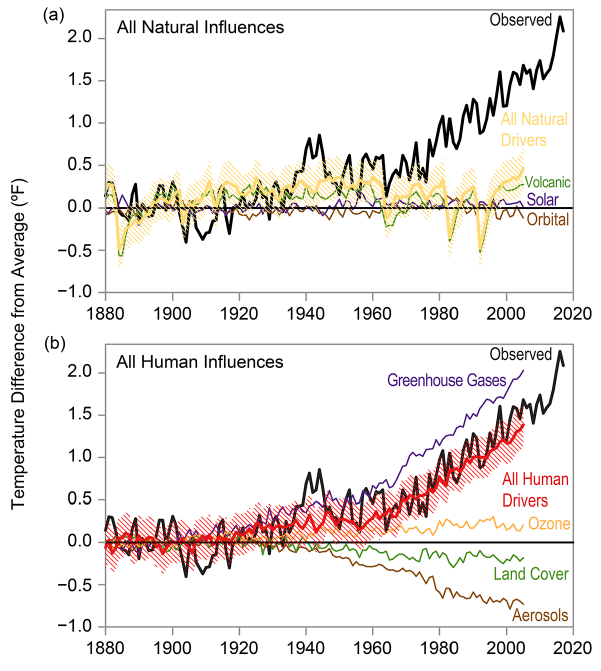General Best Practices for Communicating about Climate Change
Talking about climate change is the number one thing we can do to fight climate change! But not all talk is equally effective. Here are some tips for communicating about climate change.
Tip One: Don’t start with facts!
Don’t start with facts; we have been doing that since the 1850s (yes, 1850s—that’s not a typo!). Instead, connect with people about their values that might encourage them to take action on climate change. Try some of these things:
- Get to know them and what is important to them.
- Talk about your shared values and why climate change matters to you (e.g., children, faith, national security).
- Reframe the conversation around their vocabulary and experiences.
Tip Two: Don’t try to make everyone an expert
When discussing data or facts about climate change, do not try to correct everything that might be wrong or misunderstood. Pick one thing to correct and focus on that. See some of the info on the back page for tackling specific myths!
Tip Three: Hope not fear
Fear won’t motivate us to fight climate change.
Focusing on the benefits of climate resilience is much more effective than focusing on fear. We need what Dr. Katharine Hayhoe has dubbed “rational hope.” We can create a better future and fight climate change at the same time.
Specifically, remember to talk about solutions. These solutions can save us money and have a big impact such as abundant energy, reduced hunger across the globe, improved health, and secure economies. All worth working for on their own, climate change resilience is an added bonus.
Also communicate that we are not alone in this. A large majority of Americans think climate change is happening (about 70%), but only about 33% talk about it. This can make us feel very alone, but work is being done around the globe to combat climate change. Keep some examples of ongoing work handy.
Bonus Tip!
When talking about climate solutions, frame the conversation around both individual and community actions to avoid the misperception that taking one action is enough. We want to encourage lifestyle changes in individuals and in our communities to have lasting impact on climate change.
A few resources for talking about climate change
- Dr. Katharine Hayhoe’s Ted Talk on how to talk about climate change effectively (about 17 minutes long): https://bit.ly/2YBdVjA
- Drawdown (book and website) on solutions to climate change: www.drawdown.org
- How to Talk about Climate Change and the Ocean, a climate communication research synthesis: https://bit.ly/2uLcv8F
Common Arguments from Climate Change Skeptics (and how to answer them!)
Myth 1: This is the coldest winter we’ve seen in years! So much for global warming!
Remember that weather fluctuates day by day; climate refers to long-term trends, and the overall trend shows climate is warming.1 Also, in some places, the weather will tend more toward its extremes (hot and cold) because of climate change.
Myth 2: Climate change is natural, and humans aren’t responsible. It’s happened before.
It’s true there have been periods of warming and cooling related to spikes in greenhouse gases, but human activities are responsible for almost all increases in atmospheric greenhouse gases over the last 150 years.2 The graphic below from the Fourth National Climate Assessment (NCA4) shows that natural influences (volcanoes, solar energy, changes in Earth’s orbit) aren’t driving temperatures up very much. When you add human drivers (deforestation, greenhouse gases), you can see the numbers correspond more closely with observed temperature changes. We can track contributions of CO2 to the atmosphere over time (800,000 years) through techniques such as sampling ice cores.3

Myth 3: Sea levels aren’t rising everywhere. In some places, sea levels are actually falling.
Sea levels appear to be falling in some locations (e.g., Alaska) because the land is rising faster than the ocean. That land “uplift” is mostly due to the earth’s crust slowly rebounding from melting glaciers and ice sheets.4
Sea level rise may not be noticeable day-to-day, but the impacts can sneak up over time. It’s like not seeing your nieces and nephews for a few months and then suddenly noticing how quickly they have grown. For example, we might not notice at first the number of days each year a local beach road is closed due to flooding, but as it is closed more often, we will be more aware. Sea level rise increases the frequency and duration of nuisance flood events.
Myth 4: So what if it is warmer? Warmer temperature won’t impact my health.
Warmer temperatures can have a variety of impacts on health. They will expand the range of organisms that spread disease and will increase heart, respiratory, and other heat-related illnesses.3 It can also increase harmful events such as harmful algal blooms, commonly called red tides, and increase food pathogens such as Salmonella and Vibrio.4

1NOAA National Centers for Environmental Information. March 2018. What’s the Difference Between Weather and Climate? https://bit.ly/2R9csA2
2EPA. 2018. Climate Change Indicator: Greenhouse Gases. https://bit.ly/2dLXsRN
3USGCRP. 2018. Impacts, Risks, and Adaptation in the United States: Fourth National Climate Assessment, Volume II. Reidmiller, D. R., C. W. Avery, D. R. Easterling, K. E. Kunkel, K. L. M. Lewis, T. K. Maycock, and B. C. Stewart, Eds. U.S. Global Change Research Program, Washington, DC, USA, 1515 pp. doi:10.7930/NCA4.2018
4Englander, John. May 2017. Don’t Be Fooled By Falling Sea Level. https://bit.ly/2YEXVwR
Publication 3393 (POD-10-19)
By Renee Collini, Extension Associate, Coastal Research and Extension Center, and Marian Hanisko, Coastal Management Specialist, NOAA Gulf Coast Services Center.
Produced by Agricultural Communications.
Mississippi State University is an equal opportunity institution.
Extension Service of Mississippi State University, cooperating with U.S. Department of Agriculture. Published in furtherance of Acts of Congress, May 8 and June 30, 1914. GARY B. JACKSON, Director
The Mississippi State University Extension Service is working to ensure all web content is accessible to all users. If you need assistance accessing any of our content, please email the webteam or call 662-325-2262.

